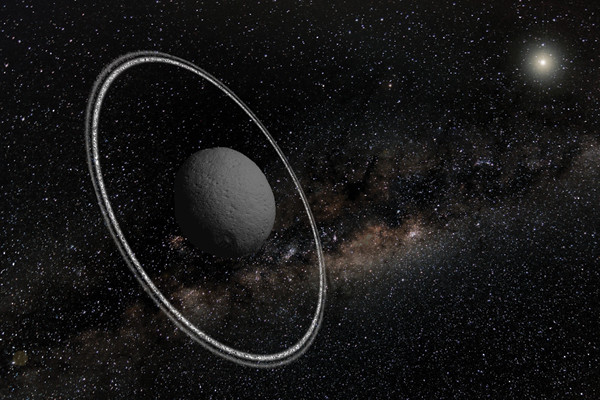
by Timothy Oleson Monday, July 21, 2014

An artist's drawing of Chariklo, the first nonplanetary object in the solar system found to host rings. Credit: Lucie Macquet.
Reporting their findings in Nature, an international team of more than 60 astronomers recently announced the detection of two rings — an inner 7-kilometer-wide-ring and an outer ring just 3 kilometers wide — circling Chariklo, which orbits the sun on a path between Saturn and Uranus. It is the largest of a group of solar system bodies called Centaurs, which are actually considered minor planets and sometimes share characteristics of both asteroids and comets.
The team of scientists, led by Felipe Braga-Ribas of Brazil’s Observatório Nacional/MCTI in Rio de Janeiro, used several telescopes in South America to track the passage, or occultation, of Chariklo in front of a distant star, as seen from our vantage point on Earth, on June 3, 2013. The data showed an expected seconds-long dip in the star’s light reaching the telescopes as Chariklo crossed in front of the star, but two additional dips occurred very briefly both before and after the main crossing. Further investigation suggested the presence of the two rings.
“We weren’t looking for a ring and didn’t think small bodies like Chariklo had them at all, so the discovery … came as a complete surprise,” Braga-Ribas said in a press release about the team’s find. In addition, he said, “it’s likely that Chariklo has at least one small moon still waiting to be discovered.” Still unclear is how the rings formed and what they’re made of, although there are indications that they contain water ice, the researchers noted.
© 2008-2021. All rights reserved. Any copying, redistribution or retransmission of any of the contents of this service without the expressed written permission of the American Geosciences Institute is expressly prohibited. Click here for all copyright requests.